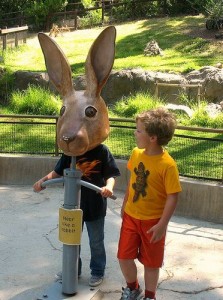 Self defense for kids isn’t always learning how to kick and punch. It’s also learning how to think, how to be aware, and how to keep a street-smart mindset.
Self defense for kids isn’t always learning how to kick and punch. It’s also learning how to think, how to be aware, and how to keep a street-smart mindset.
But how do parents teach kids self defense in the middle of a hectic home and work life?
Why not make it a game?
The following set of activities tune your senses to avoiding danger by discovering how to better scan your environment. As you and your children do these (adapt them for your children’s varying ages), try to stay in code yellow. Take your time to do each activity at your own family’s pace over eight days or so. The more fun you make these activities for yourself or your children, the better they are remembered.
Day one – take a new look
Pull your mind away from the usual ways of eating, working, studying, shopping, and observing your environment. Instead, Think Like A Black Belt. In teaching self defense for kids, get them thinking about changing their normal patterns to ones of curiosity and awareness:
✦As you take a new, fresh look, what do you notice differently?
✦ Slow your hectic pace and notice what you often take for granted.
✦ Take a second look at cashiers and other faces you often ignore. After you leave, try to recall the color of their hair and eyes. What were they wearing? Were they new or could you even tell?
✦ What is down that alley or hallway you always pass?
✦ Take new –but safe — ways home after work or school.
✦ Does your school or work place have a roof or basement you have never seen? Explore your world — safely and with permission if you are a child — as if for the first time.
Day two – see with new eyes
Try to look at your world through the eyes of another – through the eyes of a pet, criminal, movie producer, alien, superhero, or an adult if you are a child, or child if you are an adult – anything to make you witness the world through a fresh set of eyes. Pretend you are an undercover FBI agent looking for the world’s most wanted criminal.
✦ How does the world look with these new eyes?
✦ Does anything new, odd, or surprising pop out?
✦ Does the change in perspective tell you anything about your usual view of the world?—
Day three – listen closely
Use your ears like never before. Listen to everything you can at home, work, and outside. Self defense for kids and adults includes using all the senses.
✦ Can you hear how sound vibrates and voices echo in a room as you or someone else moves around in it?
✦ Do you notice how someone standing in your bedroom doorway can affect the sounds filtering in from the rest of the house?
✦ How do machine noises, such as the washer or dryer, diminish your ability to hear what else is going on in ear shot?
✦ Could you hear a window being broken?
✦ How about the neighborhood — can your neighbors hear you if you were to yell for help? Could you hear them?—
Day four – see around corners
Pay attention to what you can and can’t see – notice reflections in car windows, glass doors, windows, and framed pictures.
✦ What metallic objects in your house reflect images? Even if they are distorted images, reflections reveal motion.
✦ What areas around your car can you see with mirrors? Where are the blind spots?
✦ How about areas outside your home – what can you see or not see from your windows, from the front door?—
Day five – have a nose for danger
Notice how scent enters and fades into the environment – could you smell a would-be attacker who is a heavy smoker hiding in your car’s back seat?
✦ Can you smell cooking odors around the house in differing levels?
✦ How does it smell different in your house or workplace with a window open?
✦ What does your workplace or school smell like?
✦ How quickly could you smell smoke if a fire erupted in the staff lounge microwave or in the school kitchen?
✦ Does a smell that greets you coming home through the front door let you know someone has fixed a snack?—
Day six – find escape routes
Look in your home and at school for possible escape routes in case of fire or attack.
✦ Where could you hide from an attacker?
✦ Where are the places of concealment (hiding) and cover (protected from weapon’s fire)?
✦ Also, remember where fire extinguishers and telephone land line are located.—
Day seven – note your outside environment
Take the time to look more closely at your neighborhood and the world outside your workplace or school.
✦ Are there people nearby you could make friends with or on whom you could call, in case of emergency?
✦ Where are the dead ends? How about the best places to run if attacked?
✦ Go look at night as well as in the daytime — how does your neighborhood change between morning and night?—
Day eight – put it all together
Let all your senses drift to other rooms while at school, work, and home. Try to guess what is going on by visualizing in your mind’s eye where different people are standing or sitting based on what your senses are saying along with the wisdom of your past experience.
✦ Can you picture how people are facing each other by how their voices sound or echo about the rooms?
✦ Does a sudden whiff of perfume or a familiar cough let you know a certain coworker has entered that other room?
✦ Can you recognize which of your family members is treading across the floor in the other room?—
Now that your senses and those of your children have been aired out and fine tuned, feel free to repeat these activities and to enhance them with your own special touch that will help your children learn self-defense thinking as a life style and mindset.
——————–
Thank you for visiting!
Lori Hoeck
Photos:
“Batman”: Banjo Brown
“Rabbit Headed Kid”: di_the_huntress
Cat nose: psyberartist
Comments on this entry are closed.
What a fantastic resource, Lori! One of the hardest things for parents, when it comes to keeping kids safe, is how to introduce these topics without creating unecessary fear or ruining their childhoods with anxiety. I found it easier when mine were small. Now that I have teenagers, it’s harder but they need it SO much more; they’re going through so many brain disconnecting changes and faced with so many external dangers and challenges, they need to develop the ability to have relaxed alertness. My daughter’s friends think I’m mad when I plead with them not to walk home alone in the dark with their MP4’s on so loud, they can’t even hear someone talking to them.
One good way I’ve found of broaching the topic is to discuss films straight after we’ve seen them. For example, just last night, in a film called the Runaway Jury, my son was impressed by the main female character showing great presence of mind in a dire situation. (Using a heavy object in her handbag, fingers in the attacker’s eyes, leg sweeps, using the first sharp object that came to hand.) Maybe you could feature a series of film clips/screenshots of savvy women & kids coping and thriving by keeping their wits and being resourceful and alert.
Hi Janice,
One instructor had it right when he said from age 13 to 20 teenagers’ IQ seems to drop by half. Yes, so much is going on inside and outside of them it’s quite a ride!
Yes the film idea is a good one. My husband and I even dissect films this way, too.
I’d love to do such films, but life prevents me right now! Maybe in the near future.
Lori — This is a great list of ideas for both self-defense and awareness, in general.
Regarding the self-defense, I think the suggestions you give should be taught in every school to children, in addition to their parent’s instruction. Children are naturally curious and your suggestions encourage this curiosity. It might not only save the child’s life, but with the increased awareness, it might save another person’s life, as well.
Regarding general awareness, these suggestions are excellent for helping children be more in the present. When you learn to pay attention to what’s going on around you, you are in the “present.” Then recalling what they saw, heard, or smelled helps to reinforce the value of being present.
I loved this post:~)
Hi Sara,
I agree! Plus kids will amaze you at their level of awareness once they consistently play this game.
Interesting – as long as I can find a way to teach them without scaring them – you know what I mean?
Hi Lori,
I love your idea of making a game of this. Kids seem to be able to identity with that. Like asking them what the cashier was wearing or what color her eyes were. Or, you could even have the kids quiz the parent, thus making them more aware before the “test”.
I can’t remember if you mentioned doing it at some point in time, but I think you would be great at taking your “program” to schools. I can see it now, “Think Like A Blackbelt Inc.” With your experience, passion and knowledge of these subjects, you’d be a natural.
Hi Vered,
I believe if we can teach fire safety, street-crossing awareness, and seat belt usage without going into the horrible details that could result from not using them, then we can teach this stuff without scaring kids. As Sara notes, focus on the awareness level alone will help kids be more alert.
Hi Barbara,
I like the game reversal — having kids quiz the parent. It makes for a win, win situation with everyone becoming more aware as a matter of habit.
Yes, a school program would be fun!
“if we can teach fire safety, street-crossing awareness, and seat belt usage without going into the horrible details that could result from not using them, then we can teach this stuff without scaring kids.” – true. haven’t thought about that.
I love this. This information is validating. Sean calls me Mugsy because I am always scoping things out and and articulating my observations, but awareness is everything. A school awareness program is an excellent notion. Hi Ya!
Hi Vered,
Because we live in a seemingly safe country — compared to, say, Iraq — we often push self defense into an “Oh no!” category that seems too scary to contemplate. I grew up in a state with three types of poisonous snakes, but I roamed freely on the family farm as a teen. It was made abundantly clear to me what to look for — colors, designs, likely locations. And yet, no one ever showed fear about snakes, so they never passed that fear on to me. Despite the intense education, I enjoyed playing with non-poisonous snakes, and we even had a pet snake freely roam one of our houses.
Hi Cindy, a.k.a Mugsy,
Between the two of you, I bet you never miss a thing! Can you imagine if school kids were taught to be that aware as a habit? I don’t know if most adults could take it. Especially if we throw in setting personal boundaries and embracing personal responsibility.